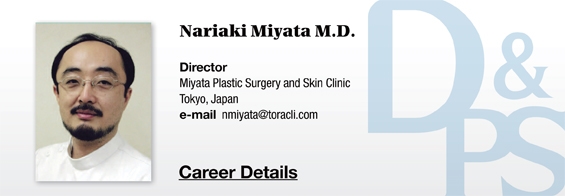
1. Melasma
When treating patients with melasma, ask them if they are okay with dark crusts forming after treatment and bandaging. Post IPL crust causes only minimal darkening and does not require covering. IPL does not clear melasma lesions completely but lightens the color. On the other hand, laser which has superior efficacy, causes thick crusts to form and post-treatment bandaging or taping is necessary. In Japan, the standard treatment of melasma is the Q-switched ruby or alexandrite laser (these days the picosecond laser is most commonly used).After treatment, skin-colored adhesive tape is applied to protect the treated area. Some patients are averse to the idea of wearing a tape on their face and will postpone the treatment until their vacation from work. They do not want other people to find out that they got an aesthetic procedure.
Aesthetic treatments are not as common in Japan as in Korea and the Japanese people tend to feel embarrassed when other people find out they got work done on their face. Foundation with anti-inflammatory agents or thin transparent bandages are available. The transparent tape is particularly beneficial in that it effectively covers up the crusts. If the doctor does not clearly explain that dark crusts form after treatment, the patient may get very upset when crusts start forming on the next day of the treatment. It is also crucial to inform patients of post-inflammatory hyperpigmentation (PIH) that develop about 2-3 weeks after treatment. Some patients still demand that you give them laser treatment right away even after hearing extensive explanation about PIH. It helps to repeatedly tell the patients that it may take months for PIH to clear away.
[Advertisement] FCR® (Fractional Prickle CoralCalcium Regentron) – Manufacturer: (www.illglobal.com)]
2. Wrinkles andsagging
Surgery is the most effective treatment option for sagging skin. One should clearly communicate with the patient that energy based treatments or other non-invasive options cannotbring the same improvement. Asians tend to have a relatively flat facial structure and only very aggressive surgery would bring drastic improvement. The doctor should use a simulation program to visualize with the patient the expected outcome.
It is also importantto explain the etiology of wrinkles and sagging. Explain that the aged, hollowed look is caused by not only sagging of the skin and subcutaneous fat but bone atrophy as well. Most patients are surprised to hear about aging of the deeper tissues and bone. However, when they understand the anatomical causes, patients often become more favorable toward the idea of injectable dermal filler (it’s not a preferred treatment option among Japanese patients). It also helps to explain that the direction of the surgical facelift may be different from the direction of natural age-related sagging. When patients understand the etiology of facial aging, they become more accepting of thread lift as well.
-To be continued-




















